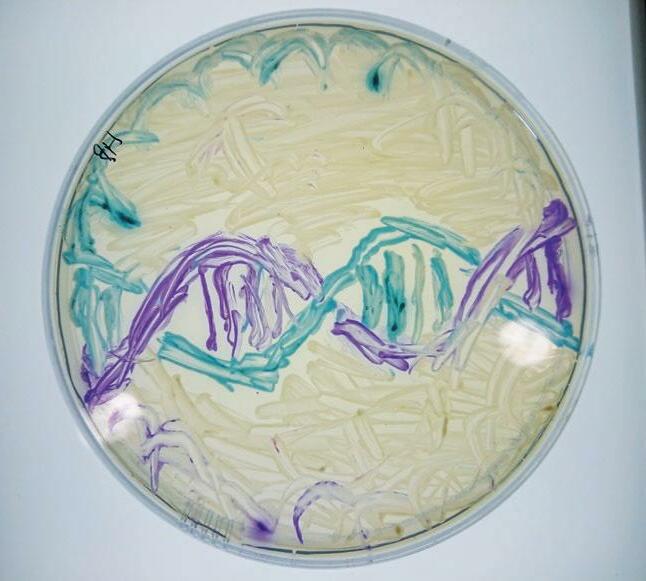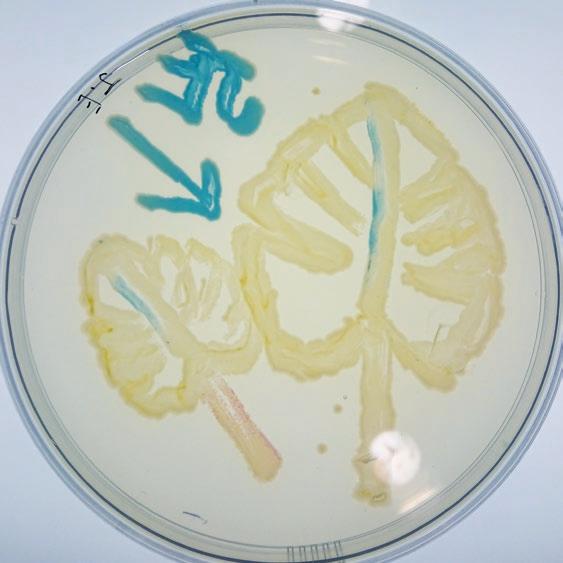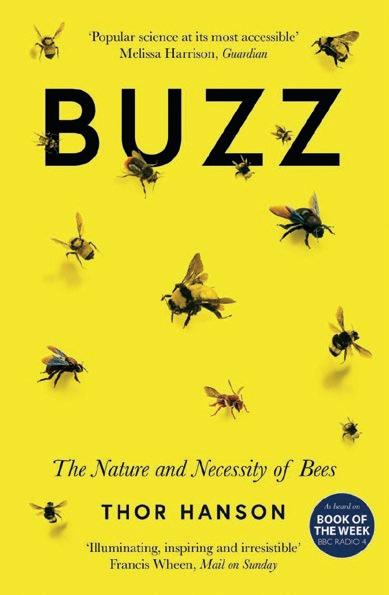
10 minute read
Biology

Olympiad News
This year was notable for the unprecedented success of the Eighth Form biologists in the British Biology Olympiad. Paulines frequently win the largest number of medals in the competition and this year 90% of Paulines who entered won medals, 25 of them gold – substantially more than in previous years.
Additionally, five Upper Eighth formers were invited to Warwick University to compete for a place in the UK Olympiad team. Monty Brown and Senan Bottomley took up the challenge and Senan was selected as one of four members of the UK team to travel to Armenia later this year for the International Biology Olympiad competition. Senan talks about his experiences at Warwick below. Fifth formers took part in the Biology Challenge competition, winning 112 medals, 28 of them gold which are awarded to the top 5% of competitors.
The biological sciences has a long history of popular scientific writing, from Darwin’s Origin of Species to more recent works by Richard Dawkins. This year, some of the Fourth and Fifth form were encouraged to read contemporary works by biologists and three have written short reviews below. In the Summer term as part of the Get Creative week, a group of Fourth formers attempted to create pictures using bacteria that produce various coloured pigments which were grown on agar plates to produce the image. Some examples of their work are shown here. ❚

The British Biology Olympiad
Senan Bottomley

The fourth Pauline to represent the UK in the International Biology Olympiad
What did the selection process at Warwick University for the UK International Biology Olympiad team involve?
SB: We had one day of training in biochemistry, dissections and botany, followed by a day of exams which involved both theory papers, lab-based practicals and a bioinformatics practical using BLAST searches.
Which practicals were the most interesting?
SB: The maggot dissection – the maggot was about 10 mm long and had been etherised so it was still alive. We pinned it out on a dissecting plate and used very fine forceps and pins to remove the gut, fat bodies and tracheae to expose the dorsal vessel which was still beating. In the training session I attempted the dissection with three maggots – all of them unsuccessful. However, in the practical exam I managed to get an intact dorsal vessel in ten minutes. We then added different chemicals to the maggot – adrenaline, saline and dopamine and had to identify which chemical was which based on its effect on the rate of contractions of the dorsal vessel. Adrenaline was the trick one – in fact it doesn’t change the rate of contraction!
What was the department at Warwick University like?
SB: We did all of the practicals the undergraduate teaching and had access to all of their equipment. We were of the high-tech microscopes that undergraduates had made from scratch which enabled them to visualise microtubules being assembled and broken down. One of the demonstrations we had on the final day was with Dr Timothy Saunders, a mechanobiologist studying heart tube formation in Drosophila, which linked nicely with the larvae dissection. He showed us a video of 3-dimensional heart development in mice.
Senan Bottomley becomes the fourth Pauline to represent the UK in the
International Biology Olympiad. ❚
A Planet of Viruses
by Carl Zimer, reviewed by Leo Lenhard
A Planet of Viruses by Carl Zimmer, goes into detail about many different viruses and their discovery. He does this through the use of stories as well as facts to explain how these viruses have impacted life.
In one case, Zimmer explains how Rhinoviruses, usually known as the common cold, are actually one of the most effective viruses due to keeping a human in bed for around a year throughout their whole life. He also describes how the common cold appeared in the oldest known medical text describing multiple diseases, one called Resh perfectly matching the symptoms for the sickness now known as the common cold. Another story told by Zimmer, portrays the first time the West Nile Virus appeared in the Western Hemisphere in Bronx Zoo, New York, after multiple animals there died.
This book conveys the information of viruses well, but also does this in an interesting way. I would highly recommend this book to others. ❚
Secret Life of Flies
by Erica MacAllister, reviewed by Henrik Helsen
This book opens with an astonishing statistic: there are 17 million flies in the world for every single human. And yet, despite the fact that there are so many of them, flies have long been overlooked by scientists in favour of bigger, ostensibly “more human-like” animals. But flies have an important role – they are the only known pollinators of the cacao tree – so no flies, no chocolate!
The book covers the different life stages of a fly, larva, pupa and adult, and the different types of fly by their function (pollinator, detritivore, coprophages, necrophages, vegetarians, parasites and sanguivores). Each section is chock-full of interesting facts and figures, and also highlights interesting and unusual examples of flies in each category.
The narrative is witty and well-paced, although sometimes it can be dense and filled with biological terminology, which sometimes requires re-reading. Nonetheless, the information generally is well-presented and accessible (complicated terms are usually explained in good detail), even for those with only a little knowledge of biology, and so offers something for everyone regardless of their level of interest.
I would definitely recommend this book for those seeking something outside the mainstream of non-fiction literature, or those who simply want to be fascinated, astonished or even
just learn something new. ❚
Buzz by Thor Hanson is more a book of popular science than an academic study, a story of sorts. However, it manages to explain everything you could possibly want to know about bees while staying an enjoyable and light read, filled with personal stories and beautiful photographs.

Buzz
by Thor Hanson, reviewed by Raphael Hibou

Hanson talks, for example, about bees in our culture: our fear of them, our art depicting them, medicinal uses, and their role in stories and mythology. He also discusses the interconnected evolution between bees and flowers, as most flowers require pollinators to spread pollen, bees being the most important of these, and bees require flowers to get their nectar. Therefore, not only have bees undergone adaptations to make the most out of the nutrition provided by flowers, but plants have developed flowers with more and more specialised features to attract bees. One of the things that struck me was the sheer variety of bees in size, colour and behaviour, as this book looked at a myriad of bees such as the digger bee, the cuckoo bee or the mason bee to name a few, which went against my existing idea of bees simply being the common honeybee Apis mellifera. A large part of our food production, which could be up to a third of all our food, is produced thanks to bees. Hanson even dissects a Big Mac to find how much of it was grown with the help of bees.
Finally, he explains the uncertain future for bees, with decreasing bee populations due to pesticides, climate change and a strange disorder known as colony collapse disorder, which is still poorly understood.
Overall, this book gave me a great insight into all things bees, a subject which may at first have seemed uninteresting, but that I in fact
found very insightful. ❚
Ferroptosis
Ynon Weiss
Each week the Biology department’s journal club meets in which a pupil leads the discussion of a recent scientific paper. Here Ynon discusses the concept of ferroptosis.
Ferroptosis, a term only coined in 2012, is the iron-dependent form of programmed cell death, and has been the focus of an exciting research paper on a potential new gene therapy for cancer.
Morphologically, ferroptosis differs from other forms of programmed cell death, such as apoptosis and autophagy, and is characterised by accumulation of iron and lipid peroxidation leading to membrane damage. The iron is utilised through the production of Reactive Oxygen Species (ROS) via the Fenton Reaction, in which Fe2+ catalyses the breakdown of hydrogen peroxide forming, among other products, hydroxyl radicals. Free radicals lead to the damaging oxidation of lipid molecules, such as those in membranes, and particularly affect polyunsaturated fatty acids. Additionally, iron can increase lipid peroxide levels through the activity of lipoxygenases, iron-containing enzymes that oxidise polyunsaturated fatty acids into lipid hydroperoxides. Under normal cellular conditions, ferroptosis is inhibited by antioxidants such as glutathione peroxidase 4, which reduces the toxic lipid hydroperoxides in membranes into non-toxic lipid alcohols. Ferroptosis has also been shown to propagate among cells, like a wave, causing killing in neighbouring cells, which is one of the attractions for research into its possible uses in treatment.
Recently in Biology Journal Club, I presented a research paper in which scientists designed a therapy based on the cancer-cell specific induction of ferroptosis, killing tumour cells while potentially overcoming problems with current cancer treatments such as chemoresistance (Nature Communications 12: 5311 (2021)). The paper proposed a combination of iron nanoparticles and gene interference to cause lipid peroxidation in cancer cells, triggering ferroptosis. The gene interference vector consisted of a Nuclear factor-kappa B (NF-kB) decoy sequence and a minimal promoter, resulting in the cancer-cell specific nature of this treatment as the NF-kB transcription factor is proven to be over activated in cancers. Furthermore, the vector contained downstream effector genes coding for either microRNA or CRISPR/Cas13a and guide RNA. Of course, the microRNA and Cas13a would only be expressed in cancer cells, where NF-kB is present and can bind to the promoter allowing transcription to occur. Both of these systems knock down the expression of the target genes by targeting specific mRNA molecules before translation takes place. The Ferroportin and Lipocalin-2 genes were decided as the genes of interest, with the former coding for a transmembrane protein which exports intracellular iron, while the latter codes for a protein that sequesters iron, preventing the accumulation of excess free iron in the cytoplasm. Halting expression of these genes would stop the cancer cells from exporting excess iron, eventually inducing ferroptosis. Excess iron was provided by treating the cells with iron oxide nanoparticles, which release the Fe2+ ions inside the cells needed for the Fenton Reaction. Therefore the combination of the iron nanoparticles and the inhibition of iron metabolism genes only in cancer cells should result in the accumulation of iron ions, and thus an increase in ROS levels, resulting in cell death via ferroptosis. Impressively, the human leukaemia cells which were transfected with the gene interfering vector and treated with iron nanoparticles showed significant cell death, with this result being repeated in different human and mice cancer cells. The team then wanted to explore the anti-tumour effects of this treatment in vivo, so they transplanted mouse leukaemia cells into mice. The gene interfering vectors were also cloned into adeno associated viruses (AAV), which could transfect the mice. Again, tumour growth was significantly inhibited, and survival time of mice with lung metastatic melanoma was improved when they were treated with this therapy. In order to increase the effects of the treatment, they suggested to prepare nanoparticles with tumourspecific ligands which would result in greater accumulation of nanoparticles in the tumour cells and an even more effective treatment, yet this would be difficult to produce as there are few highly specific biomarkers on tumour cell surfaces. ❚










